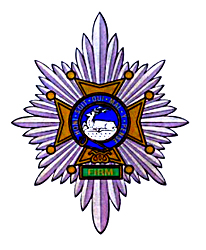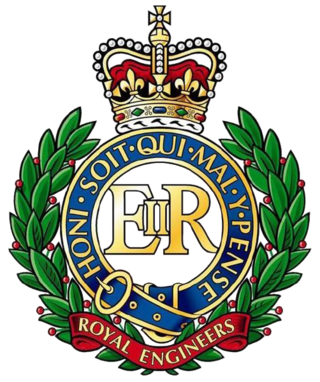
The 46th Division was an infantry division of the British Army, part of the Territorial Force, that saw service in the First World War. At the outbreak of the war, the 46th Division was commanded by Major-General Hon. E.J. Montagu-Stuart-Wortley. Originally called the North Midland Division, it was redesignated as the 46th Division in May 1915.

The Worcestershire and Sherwood Foresters Regiment was an infantry regiment of the British Army, part of the Prince of Wales' Division. The regiment served as the county regiment for Derbyshire, Nottinghamshire and Worcestershire.

The Sherwood Rangers Yeomanry (SRY) was a British Yeomanry regiment. In 1967 it was amalgamated with other units to form the Royal Yeomanry (RY), a light cavalry regiment of the Army Reserve. Originally raised as the Nottinghamshire Yeomanry Cavalry in 1794, the regiment was used on several occasions in the 19th Century to maintain law and order. During the Second Boer War and both World Wars the regiment earned 44 battle honours. It is now one of the six squadrons of the Royal Yeomanry (RY), a light cavalry regiment of the Army Reserve. Designated as 'A' Squadron, the Sherwood Rangers Yeomanry's current role is to support the Light Cavalry Regiments on operations by providing reconnaissance soldiers.
The Robin Hood Battalion was a unit of the Volunteer Force of the British Army and Territorial Force, later the Territorial Army. The battalion served as infantry during the 1916 Easter Uprising in Dublin and then served on the Western Front during World War I. In the 1930s it re-roled as an anti-aircraft unit and served in World War II, including North-western Europe from June 1944 to May 1945.

The Sherwood Foresters was a line infantry regiment of the British Army in existence for just under 90 years, from 1881 to 1970. In 1970, the regiment was amalgamated with the Worcestershire Regiment to form the Worcestershire and Sherwood Foresters Regiment, which in 2007 was amalgamated with the Cheshire Regiment and the Staffordshire Regiment to form the present Mercian Regiment. The lineage of the Sherwood Foresters is now continued by The Mercian Regiment.

The South Nottinghamshire Hussars is a unit of the British Army formed as volunteer cavalry in 1794. Converted to artillery in 1922, it presently forms part of 103 Regiment, Royal Artillery.

Lieutenant-Colonel Arthur William Lancelot Brewill was an architect based in Nottingham.
Captain Basil Edgar Baily FRIBA was an architect based in Nottingham. Much of his earlier work had to do with nearby churches.
The North Midland Brigade was an infantry formation of Britain's Volunteer Force from 1888 to 1908.
The 226th Infantry Brigade was a Home Service formation of the British Army that existed under various short-lived titles in both World War I and World War II.

The 2nd Anti-Aircraft Division was an Air Defence formation of the British Army from 1935 to 1942. It controlled anti-aircraft gun and searchlight units of the Territorial Army (TA) defending the East Midlands and East Anglia during The Blitz.
The 32nd (Midland) Anti-Aircraft Brigade was an air defence formation of Anti-Aircraft Command in Britain's Territorial Army (TA) from 1936 to 1955, charged with defending the East Midlands of England.
The 139th Brigade was an infantry brigade of the British Army that saw active service in the First World War with the 46th Division. Later designated the 139th Infantry Brigade, the brigade also saw service with the 46th Infantry Division in the Second World War.
The High Peak Rifles, later 6th Battalion, Sherwood Foresters, was a volunteer unit of Britain's Territorial Army. First raised in the High Peak area of Derbyshire in 1860, it fought as infantry on the Western Front during the First World War and as an air defence unit during the Second World War. Its descendants remained in the Army Reserve until 2014.

The Cattle Market Street drill hall is a former military installation in Norwich, United Kingdom.

Stockport Armoury is a military installation in Stockport, Greater Manchester, England. It is a Grade II listed building.

The Otley Road drill hall, sometimes known as Wellington House, is a former military installation in Skipton, North Yorkshire, England.

The Sherwood Avenue drill hall is a former military installation in Newark-on-Trent, Nottinghamshire.

The Church Street drill hall is a former military installation in Brighton. It is a Grade II listed building.

140 Corps Engineer Regiment was a short-lived Territorial Army (TA) unit of the Royal Engineers based in the North Midlands of England during the 1960s.














